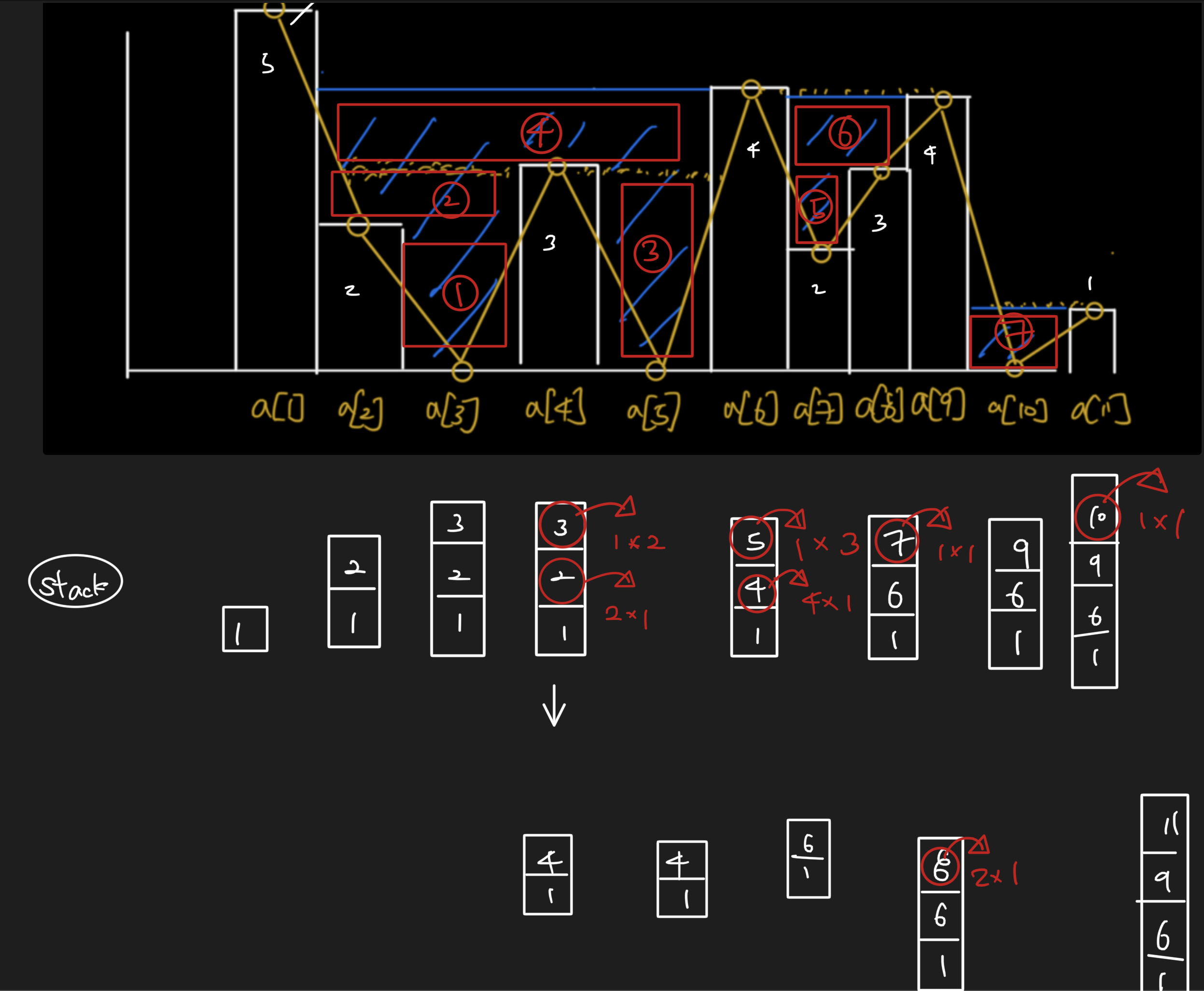Leetcod hard
Leetcode::problem(42) Trapping Rain Water
Leetcode ps hard
Leetcode::Trapping Rain Water
-
level : hard
point
- There are n number of bars on each index
- Compute how much water it can trap after raining
Design
My way
- Well, we can solve this problem by brute force but it takes O(N^2) obviously
- If we use sort wisely, we can solve this problem
- First of all we sort {height, index}
- Then we iterate sorted array from left to right
- It means that we are iterating from the heighst bar to lowest bar
- We are going to manage the section of indices that we already counted
- There is only one section always
- While iterating the array, we either enlarge the section or ignore it
- We ignore the index if it is included in the secion, which means it is counted already
- If we haven’t met current index, we enlarge the section and add water amount between the section’s edge and current position

Approach 2 (DP)
- From the point of index i, we only need the max height from left side of it and right side of it
- Then we would know the smaller one between them, let’s say the smaller one’s index is ‘k’
- For index i, the amount of water would be height[k] - height[i]
Approach 3 (Stack)
- This approach is hard to come up but it is useful
- We only store index on a stack in a decreasing way of order
- While doing that, if we get a height of index that’s going to break the decreasing order (from the stack) we use this index until the last number from the stack is larger than current index, since we need to make the stack in decreasing order
- Check below image that I draw

- After popping from the stack, we add distance * height of red box to the answer
Big O(time)
- My way -> O(NlogN)
- Approach 2, 3 -> O(N)
Code
My way
class Solution {
public:
typedef long long ll;
int trap(vector<int>& height) {
int n = (int)height.size();
vector<pair<int,int> > h2(n);
vector<int> top(n, 0);
for(int i = 0; i < n; i++) h2[i] = {height[i], i};
sort(h2.rbegin(), h2.rend());
ll sum = 0, le = -1, ri = -1;
for (int i = 0; i < n; i++) {
int id = h2[i].second, h = h2[i].first;
if (le == -1) le = ri = id, top[id] = h;
else {
if (id < le || id > ri) {
if (id < le) {
for(int j = id; j < le; j++) top[j] = h;
le = id;
} else {
for(int j = ri + 1; j <= id; j++) top[j] = h;
ri = id;
}
} else {
// do nothing
}
}
}
for(int i = 0; i < n; i++) {
sum += (top[i] - height[i]);
}
return sum;
}
};
Approach 2
class Solution {
public:
int trap(vector<int>& height) {
int n = height.size();
vector<int> leftMax(n, 0), rightMax(n, 0);
leftMax[0] = height[0], rightMax[n-1] = height[n-1];
for(int i = 1; i < n; i++) leftMax[i] = max(leftMax[i-1], height[i]);
for(int i = n-2; i >= 0; i--) rightMax[i] = max(rightMax[i+1], height[i]);
int ans = 0;
for(int i = 1; i < n -1 ; i++) {
ans += max( min(leftMax[i-1], rightMax[i+1]) - height[i], 0);
}
return ans;
}
};
Approach 3
class Solution {
public:
int trap(vector<int>& height) {
vector<int> stk;
int ans = 0, current = 0, n = height.size();
while(current < n) {
while(!stk.empty() && height[stk.back()] <= height[current]) {
int top = stk.back();
stk.pop_back();
if (stk.empty()) break;
int dist = current - stk.back() - 1;
int h = min(height[current], height[stk.back()]) - height[top];
ans += dist * h;
}
stk.push_back(current++);
}
return ans;
}
};